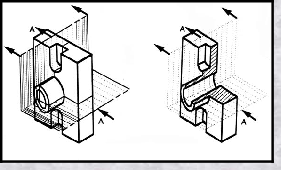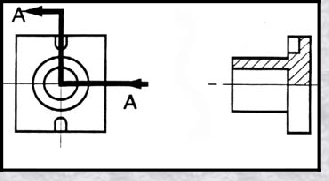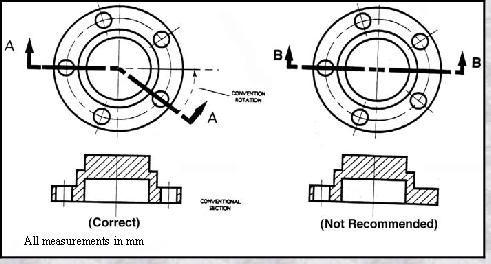





Half-Sections
A half-section is a view of an object showing one-half of the view in section, as in the drawing below. The diagonal lines on the section drawing are used to indicate the area that has been theoretically cut. These lines are called section lining or cross-hatching . The lines are thin and are usually drawn at a 45-degree angle to the major outline of the object.
The spacing between lines should be uniform. A second, rarer, use of cross-hatching is to indicate the material of the object. One form of cross-hatching may be used for cast iron, another for bronze, and so on.
IF IN DOUBT ASK !!!!

Engineering Drawing and Sketching
for GCSE
for GCSE

More frequently, the type of material is indicated
elsewhere on the drawing, making the use of different types of cross hatching unnecessary. Usually hidden (dotted) lines are not used on the cross-section unless they are
elsewhere on the drawing, making the use of different types of cross hatching unnecessary. Usually hidden (dotted) lines are not used on the cross-


needed for dimensioning purposes. Also, some hidden lines on the non-sectioned part of the drawings are not needed (figure 11) since they become redundant information and may clutter the drawing.

Sectioning Objects with Holes, Ribs, Etc.
The cross-section on the right of the drawing below is technically correct. More usually, the convention in a drawing is to show the view on the left as the preferred method for sectioning this type of object.
Either illustration is clear to follow as the section-line indicates precisely what is being shown in the cross-section associated with the main drawing. Convention however is precisely what the name implies and if current practice expects a certain approach then clearly communication is aided by adopting that approach.


